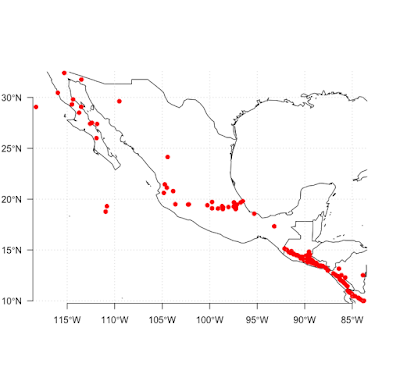Get the coordinates of Volcanos from Wikipedia page

You can find many information in Wikipedia pages but sometimes in can be long to gather them manually. R can be used as a sucker of information. Let see how it can retrieve the coordinates of volcanos in Central America. The web pages are here: https://en.wikipedia.org/wiki/List_of_volcanoes_in_Mexico https://en.wikipedia.org/wiki/List_of_volcanoes_in_Guatemala https://en.wikipedia.org/wiki/List_of_volcanoes_in_El_Salvador https://en.wikipedia.org/wiki/List_of_volcanoes_in_Nicaragua https://en.wikipedia.org/wiki/List_of_volcanoes_in_Costa_Rica library(maps) library(mapdata) library(maptools) library(XML) # Note a problem in readHTMLTable. It cannot be used directly with url: # readHTMLTable(url, header=FALSE, stringsAsFactors = FALSE) generates an error # load a file in temporary directory url <- "https://en.wikipedia.org/wiki/List_of_volcanoes_in_Mexico" dest <- paste(tempdir(), "/List_of_volcanoes_in_Mexico.html", sep="")

